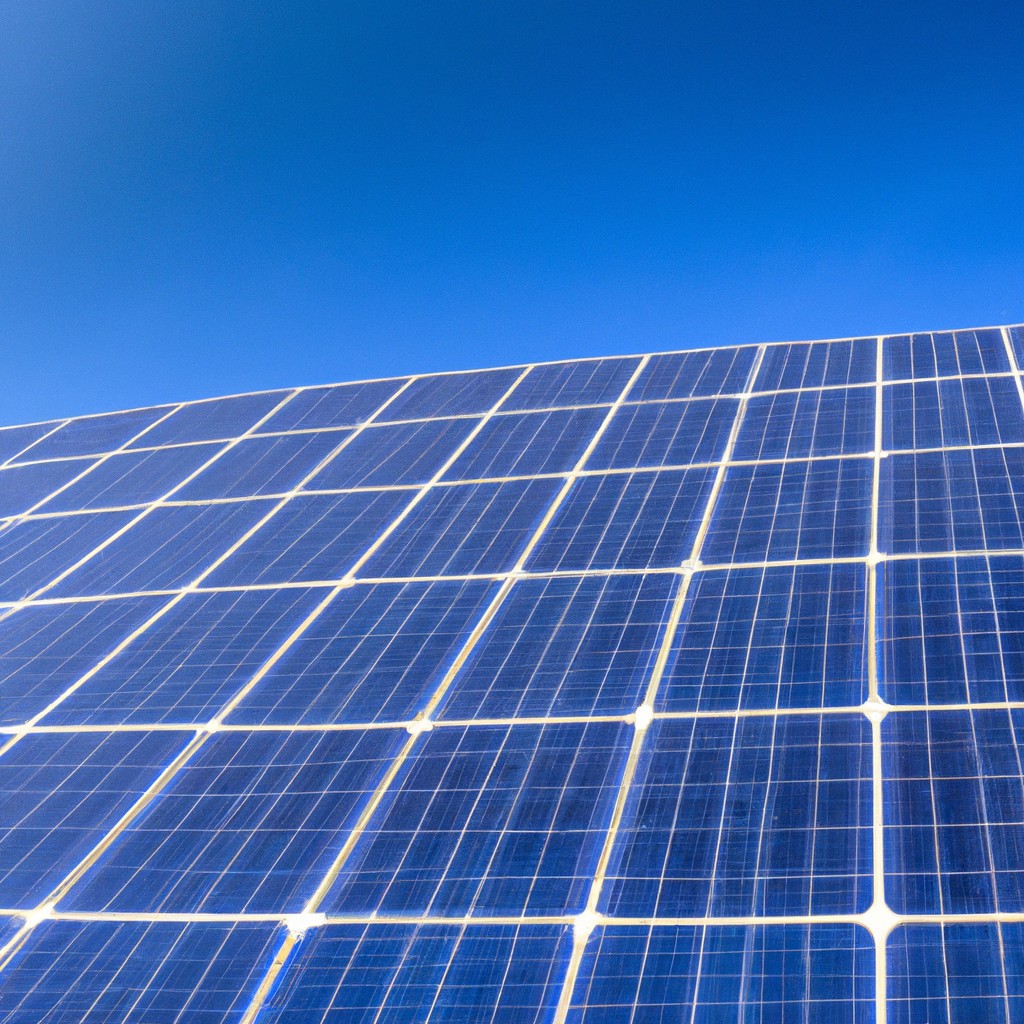Learn how sunlight makes its incredible journey from the sun to Earth’s surface.
Key takeaways:
- Sun sends energy to Earth in the form of photons.
- Energy comes in different types within the electromagnetic spectrum.
- Atmosphere reflects, absorbs, and allows some energy to reach Earth.
- Seasonal variations in solar energy due to Earth’s tilt and angle of sunlight.
- Solar energy is used for electricity, heating, cooking, and more.
Solar Radiation

Our favorite star, the Sun, constantly sends out energy in all directions, including towards Earth, in the form of tiny packets called photons. These photons travel at the speed of light—super fast, like a million Usain Bolts stacked on top of each other.
This energy shows up as solar radiation and can be broken down into different types within the electromagnetic spectrum. To make things more fun, we can think of these types as a solar mix tape:
- Visible light: This is what lets us see rainbows and pick out our favorite colors. It’s like the Spotify playlist for our eyes.
- Ultraviolet (UV) light: The rebellious cousin who loves giving you sunburn if you’re not protected.
- Infrared light: The gentle, warm hug you feel on your skin on a sunny day. Not as visible, but you’ll feel it.
Photons don’t get stopped by space traffic; they zoom straight to us in about 8 minutes and 20 seconds from the Sun. That’s quicker than a pizza delivery!
Electromagnetic Spectrum
When solar energy travels to Earth, it comes as part of the electromagnetic spectrum. Think of this spectrum as a cosmic mixtape with a range of tracks: radio waves, microwaves, infrared, visible light, ultraviolet, X-rays, and gamma rays.
Visible light is the most obvious part of this mixtape, lighting up our world with colors. But those infrared waves? They’re the warm fuzzies we feel on our skin.
Ultraviolet rays are the rebellious tracks; they can cause sunburn but also help our bodies make vitamin D.
The variety within the electromagnetic spectrum means solar energy can perform a lot of different tricks when it reaches us. Who knew the sun was such a multitasker?
Absorption and Reflection in Earth’s Atmosphere
When solar energy reaches Earth’s atmosphere, it’s like a party invitation sent to different guests. Some are VIPs and get straight in, while others are turned away at the door.
First, the atmosphere reflects about 30% of the incoming solar radiation back into space. Think of it as a giant cosmic mirror ball. Certain gases and particles in the atmosphere play bouncer, blocking some of the energy. Clouds are the gatekeepers here; they reflect sunlight and keep the energy from getting through.
Next, around 20% of the solar energy gets absorbed by the atmosphere and clouds. Various gases, like ozone, water vapor, and carbon dioxide, politely accept some of this energy.
Finally, about 50% of the sunlight marches down to Earth and gets absorbed by the land and oceans. This energy warms our planet, making life enjoyable rather than one long ice-cube existence. Imagine the sunlight saying, “Hey Earth, here’s some warmth for those beach days!”
Seasonal Variations in Solar Energy
Ever wondered why winter feels like nature hit the dimmer switch? It’s all thanks to Earth’s annual salsa dance around the sun. Here are some quick bites to digest:
Firstly, the tilt. Earth’s axis is tilted at about 23.5 degrees. This tilt means that different parts of the Earth receive varying amounts of solar energy throughout the year.
Secondly, hemispheres take turns tanning. When the Northern Hemisphere is tilted toward the sun, it’s summer there and winter in the Southern Hemisphere, and vice versa.
Thirdly, the angle of sunlight makes all the difference. Direct sunlight delivers more energy than sunlight hitting at a slant. So, during summer, the sun’s rays hit more directly, making beaches and BBQs a thing. In winter, the rays come in like a kid sneaking past bedtime – all slanted and weak.
Lastly, the length of days plays a crucial role. Summer days stretch out like a lazy cat, while winter days scamper away before you can find your gloves. More daylight hours = more solar energy.
And don’t forget cloud cover. It’s not just there to ruin your picnic. More clouds in winter means less sun reaches the ground.
So, next time you’re shivering under three blankets, just remember, it’s all a celestial waltz!
Solar Energy Applications On Earth
From powering homes to charging your svelte electric car, solar energy has a myriad of applications on Earth. You know, beyond just tanning us on the beach.
Solar panels, those charming blue rectangles, convert sunlight into electricity to power homes and businesses. Even the humble calculator can thank solar cells for extending its battery-free life.
Solar water heaters harness the sun’s warmth to provide hot water, giving your morning shower an eco-friendly touch.
On a larger scale, solar farms take fields of sunlight and turn them into vast amounts of energy, enough to power entire communities. They’re like crop fields, but without the need for scarecrows.
And let’s not forget solar cookers. These nifty devices use reflective materials to focus solar energy, making it possible to cook a meal using nothing but sunlight. Perfect for off-grid living or showing off at a camping trip.
In deserts, solar energy powers desalination plants, turning salty seawater into drinkable freshwater. It’s like magic, only science-y.
Lastly, solar-powered gadgets, from garden lights to phone chargers, let you soak up the sun’s energy for everyday uses. Because who doesn’t want solar-powered fairy lights to light up a summer barbecue?
Also Read:
- Solar Radiation: Understanding Its Impact and Safety Measures
- Solar Constant: Understanding Its Importance in Earth’s Energy Balance
- How Does Solar Radiation Affect Climate: Understanding the Impact
- Why is Earth Not Affected by Solar Wind: Understanding Our Planet’s Shielding Mechanisms
- Solar Irradiance: Understanding Its Impact and Importance